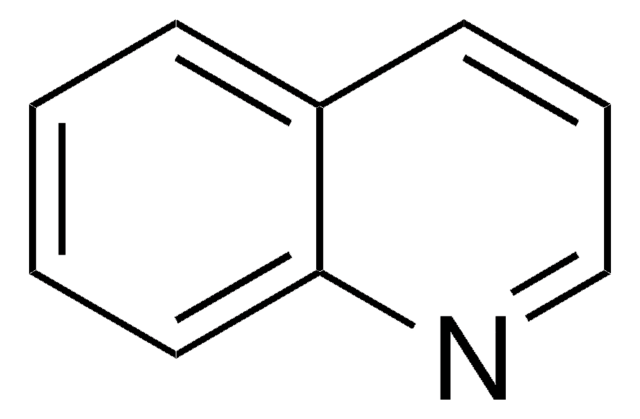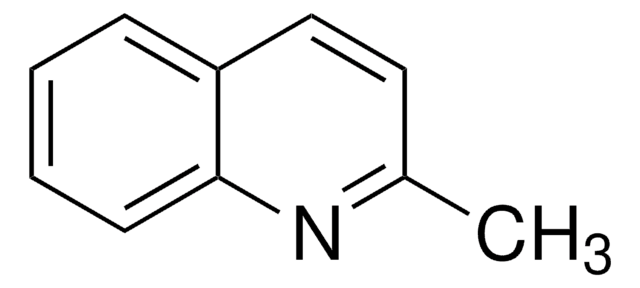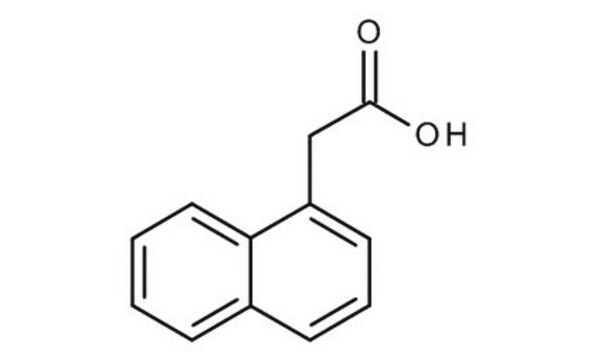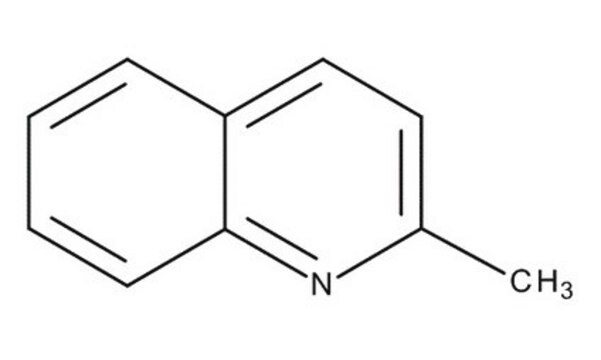8.02407
Quinoline
for synthesis
Sinónimos:
Quinoline, 1-Azanaphthalene
About This Item
Productos recomendados
vapor pressure
11 Pa ( 25 °C)
Quality Level
assay
≥97.0% (GC)
form
liquid
autoignition temp.
480 °C
potency
270 mg/kg LD50, oral (Rat)
590 mg/kg LD50, skin (Rabbit)
expl. lim.
1.2-7 % (v/v)
pH
7.3 (20 °C, 5 g/L in H2O)
bp
237-238 °C/1013 hPa
mp
-15 °C
transition temp
flash point 107 °C
solubility
6 g/L
density
1.09 g/cm3 at 25 °C
storage temp.
2-30°C
InChI
1S/C9H7N/c1-2-6-9-8(4-1)5-3-7-10-9/h1-7H
InChI key
SMWDFEZZVXVKRB-UHFFFAOYSA-N
Application
- Application of quinoline derivatives in third-generation photovoltaics: This article reviews the latest developments in quinoline derivatives, highlighting their implementation in third-generation photovoltaics, showcasing advancements in the field (Lewinska et al., 2021).
- Recent advances in the synthesis of biologically and pharmaceutically active quinoline and its analogues: A comprehensive review on the synthesis methods of quinoline, discussing their biological and pharmaceutical applications, focusing on innovative synthetic routes (Weyesa et al., 2020).
- Recent advances in chemistry and therapeutic potential of functionalized quinoline motifs: This review explores the medicinal potential of quinoline and its functionalized derivatives, emphasizing their utility in drug development (Ajani et al., 2022).
- Comprehensive review on current developments of quinoline-based anticancer agents: This review article covers the role of quinoline compounds in anticancer drug development, highlighting recent progress and new drugs based on the quinoline scaffold (Jain et al., 2019).
Analysis Note
Density (d 20 °C/ 4 °C): 1.092 - 1.094
Identity (IR): passes test
signalword
Danger
Hazard Classifications
Acute Tox. 3 Oral - Acute Tox. 4 Dermal - Aquatic Chronic 2 - Carc. 1B - Eye Irrit. 2 - Muta. 2 - Skin Irrit. 2
Storage Class
6.1C - Combustible, acute toxic Cat.3 / toxic compounds or compounds which causing chronic effects
wgk_germany
WGK 2
flash_point_f
224.6 °F
flash_point_c
107 °C
Certificados de análisis (COA)
Busque Certificados de análisis (COA) introduciendo el número de lote del producto. Los números de lote se encuentran en la etiqueta del producto después de las palabras «Lot» o «Batch»
¿Ya tiene este producto?
Encuentre la documentación para los productos que ha comprado recientemente en la Biblioteca de documentos.
Nuestro equipo de científicos tiene experiencia en todas las áreas de investigación: Ciencias de la vida, Ciencia de los materiales, Síntesis química, Cromatografía, Analítica y muchas otras.
Póngase en contacto con el Servicio técnico









